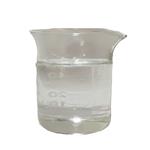- Propiolic Acid
-

- $0.00 / 25KG
-
2025-02-21
- CAS:471-25-0
- Min. Order: 1KG
- Purity: 99%
- Supply Ability: 50000KG/month
- Propiolic Acid
-

- $1.00 / 1kg
-
2025-02-19
- CAS:471-25-0
- Min. Order: 1kg
- Purity: 99%
- Supply Ability: 10 mt
- Propiolic Acid
-

- $1.00 / 1KG
-
2019-07-06
- CAS:471-25-0
- Min. Order: 1KG
- Purity: 97%
- Supply Ability: 200KG
|
| | Propiolic Acid Basic information |
| | Propiolic Acid Chemical Properties |
| Melting point | 16-18 °C (lit.) | | Boiling point | 102 °C/200 mmHg (lit.) | | density | 1.138 g/mL at 25 °C (lit.) | | refractive index | n20/D 1.431(lit.) | | Fp | 138 °F | | storage temp. | 2-8°C | | solubility | Chloroform (Soluble), Methanol (Soluble) | | form | Liquid After Melting | | pka | 1.84(at 25℃) | | Specific Gravity | 1.138 | | color | Clear colorless to light brown | | Water Solubility | miscible | | Merck | 14,7821 | | BRN | 878176 | | Stability: | Stable. Incompatible with bases, oxidizing agents, reducing agents. Combustible. | | CAS DataBase Reference | 471-25-0(CAS DataBase Reference) | | NIST Chemistry Reference | Propiolic acid(471-25-0) | | EPA Substance Registry System | 2-Propynoic acid (471-25-0) |
| Hazard Codes | T | | Risk Statements | 24/25-34-25-23/24/25 | | Safety Statements | 26-36/37/39-45-24/25-7/9 | | RIDADR | UN 2920 8/PG 2 | | WGK Germany | 3 | | RTECS | UD9300000 | | F | 3-8 | | TSCA | Yes | | HazardClass | 8 | | PackingGroup | II | | HS Code | 29161980 | | Hazardous Substances Data | 471-25-0(Hazardous Substances Data) | | Toxicity | guinea pig,LD50,skin,100mg/kg (100mg/kg),"Patty's Industrial Hygiene and Toxicology," 3rd rev. ed., Clayton, G.D., and F.E. Clayton, eds., New York, John Wiley & Sons, Inc., 1978-82. Vol. 3 originally pub. in 1979; pub. as 2n rev. ed. in 1985.Vol. 2C, Pg. 4953, 1982. |
| | Propiolic Acid Usage And Synthesis |
| Chemical Properties | viscous yellow liquid | | Uses | Reagent employed in the synthesis of transition metal complexes, haloalkyl propiolates, and halopropenoates. | | Uses | Propiolic acid is a reagent used in the preparation of transition metal complexes, haloalkyl propiolates and halopropenoates. | | Uses | Propiolic acid is an intermediate in monohalogenated acetylene
synthesis and a corrosion inhibitor for steel. | | Definition | ChEBI: A terminal acetylenic compound that is a 3-carbon, straight-chain, monounsaturated fatty acid having one acetylenic bond. | | References | [1] Elmer Raunio, Louis Remsberg and Jr. “Notes- Potassium Hydroxide as a Catalyst for the Condensation of Propiolic Acid or Propiolic Esters with Ketones.” The Journal of Organic Chemistry 25 8 (1960): 1436–1437.
[2] K. Okuma, Toshiyuki Shigetomi, M. Koda. “Reaction of Selenoketones with Propiolic Acid.” Phosphorus Sulfur and Silicon and The Related Elements 9 5 1 (2008): 1057–1060.
[3] Dirk Hollenw?ger* and Andreas J. Kornath. “Synthesis and Structure of Protonated Propiolic Acid.” The Journal of Organic Chemistry 89 16 (2024): 11421-11428 11421-11428. |
| | Propiolic Acid Preparation Products And Raw materials |
| Raw materials | FUMING SULFURIC ACID-->Chromium(VI) oxide-->Propargyl alcohol-->SODIUM ACETYLIDE | | Preparation Products | 3-Aminoisoxazole-->3-oxopregn-4-ene-21,17alpha-carbolactone-->Androst-5-ene-3,17-diol-17-propanoic acid lactone-->3,17-Dihydroxyandrost-5-ene-17-propionic acid phtassium salt-->Benzene, 1,1'-(1,3-butadiyne-1,4-diyl)bis[4-fluoro--->3,4-Dimethylbenzoic acid-->TRANS-3-CHLOROACRYLIC ACID-->7,8-Dihydroxycoumarin-->4,4'-DIFLUORODIPHENYLACETYLENE-->Propiolic acid, (p-chlorophenyl)- (8CI)-->PROPYNAL-->DI-P-TOLYLACETYLENE-->CIS-3-CHLOROACRYLIC ACID-->2-HEXYNOIC ACID |
|